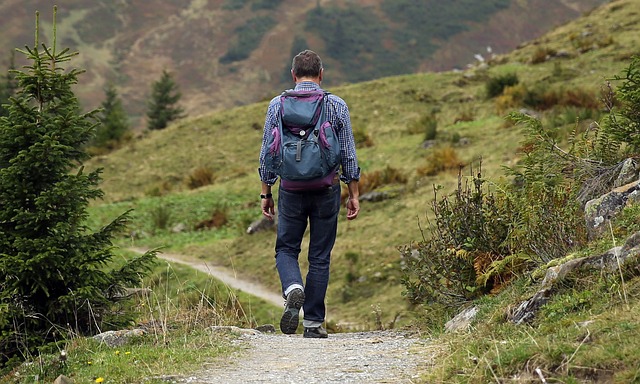With the gradual shift toward working from a desk and driving in cars, it’s no surprise that the amount of time spent outdoors is in rapid decline. The average American spends almost 90% of their day indoors. Fortunately, there are strategies you can apply to change this statistic in your own life — and inspire others around you to do the same. Outdoor exercise has tremendous benefits for your physical and mental health, as well as the environment itself — and it’s easier than you might think to apply it in your day to day life.
What Is Green Exercise?
Green exercise is any outdoor activity that keeps you moving and gets your heart pumping. There are virtually limitless options for where you can do this exercise, like the park, beach or your local track. While gyms offer a robust variety of workouts, nothing beats the great outdoors when it comes to creativity!
Forms of green exercise include:
- Walking
- Running
- Cycling
- Yoga
- Sports activities, like soccer or baseball
- Beach volleyball
- Swimming in a lake or ocean
- Gardening
What Are the Physical Benefits of Green Exercise?
Too much time spent sitting at a desk has left 47% of Americans concerned about their posture and the related health impacts. In addition to practicing better posture and incorporating regular stretches into your routine, you can make the most of green exercise to stay healthy in the long term.
1. Improved Mood and Mental Well-Being
Green exercise is known for its mood-boosting, stress-lowering benefits. According to published research, outdoor workouts can ease anxiety, stress and depression symptoms, while spending time in nature can strengthen cognitive function and keep you energized and focused.
2. Diverse Exercise Options
When you head outdoors to get your daily movement in, there’s no shortage of workout options available. As a bonus, many outdoor activities bring their own unique physical obstacles to help you maximize the impact of your workout. Wind resistance, challenging terrain, leg-churning uphill climbs and difficult weather conditions can keep you sharp both physically and mentally, leading to greater endurance and strength.
3. Higher Likelihood of Building Lasting Habits
Studies have found that those who engage in outdoor exercise are more likely to build a repeated, sustainable habitthan if they did the same exercise indoors. This may be because being in nature comes with less distractions, making you tune in more closely to the world around you and leaving your exercise feeling more manageable.
4. Greater Exposure to Sunlight
Spending time outdoors in direct sunlight enhances your vitamin D absorption. This can lead to a host of positive health benefits, including improved immune function, stronger bones, greater brain health, and reduced inflammation. As you start to exercise outside and enjoy these sunny side effects, you’ll likely find a wonderful chain reaction that leaves you with more energy and improved health to stay active.
What Are the Environmental Benefits of Green Exercise?
In addition to its positive physical side effects, green exercise also has the potential to aid the environment.
1. Building Healthier Eating Habits
Building healthier habits often leads to better eating choices, including consuming less pre-packaged and processed junk food. Pairing green exercise and an eco-conscious mindset with more organic food shopping can make a dent on the environment around you.
2. Maximizing Urban Forests
With almost 80% of the United States population living in urban areas, you might wonder whether green exercise options exist for everyone. But with an estimated 3.8 billion trees in the nation’s urban forests, you can almost certainly find a spot to soak in nature in your area. By turning to outdoor areas for workouts and encouraging others in your community to do the same, you can emphasize the importance of future growth for urban forests.
3. Cutting Down on Gym Usage
Gyms certainly have their benefits, but they also require a significant amount of electricity to keep running. Exercising outdoors, on the other hand, is an eco-friendly way to get your heart rate up without any environmental impact. Even if you don’t want to cut out the gym entirely, consider minimizing your usage and opting for a run outside rather than hitting the treadmill, for example.
How to Incorporate More Green Exercise in Your Routine
If kick-starting your green exercise sounds daunting, consider starting slow and aiming for just one outdoor workout a week. You will no doubt soon find you love the creativity and flexibility that green exercise brings! Here’s how to begin:
- Pick your spaces: Take a look around to identify the outdoor spots you enjoy and can easily access. Whether it’s a nearby park, a river or even your own garden, these locations can inspire your exercise routine.
- Choose the right activities: When you pursue activities you find life-giving, you’re more likely to stick with them long term. If you’re not ready for a hardcore workout, shoot for a more sustainable, less strenuous activity like a walk or yoga class in the park.
- Plan for your workout: The great outdoors likes to throw curveballs, so a little planning goes a long way. Peeking ahead at the weather and temperature will help you dress appropriately, pick the perfect time and maximize your workout.
- Time your workout well: Some people love getting in a workout first thing in the morning, while others need to properly wake up first. Think about your own energy flow and what works best with your schedule, and plan accordingly.
Head Outside to Enjoy Your Green Exercise
Take some time to think about your favorite activities and your go-to spot in nature, and head out to make the most of green exercise’s many calming, heart-healthy benefits!
Mia Barnes is a health and lifestyle writer with a passion for sustainable wellness and eco-friendly living. Mia is the Editor-in-Chief of Body+Mind magazine with over 5 years of experience in freelance writing.
Image by Hermann Traub






